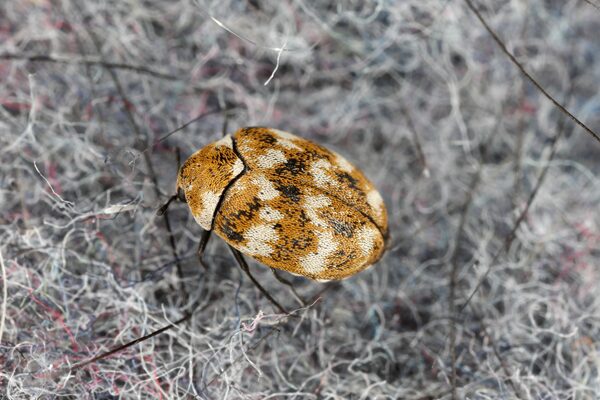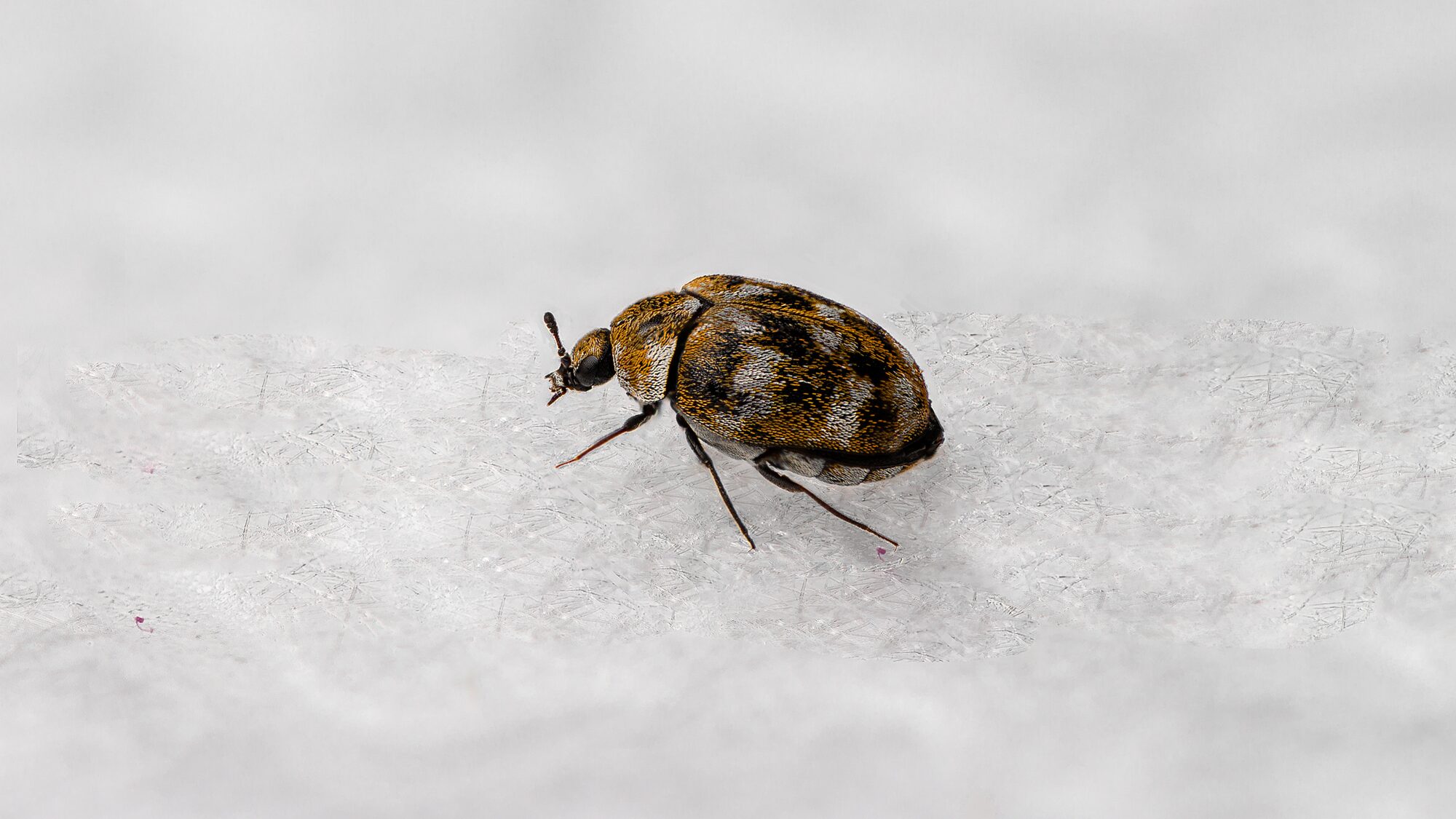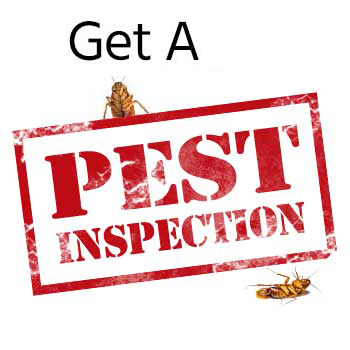From Larvae to Adulthood: Unraveling the Stages and Habits of Carpet Beetles
Understanding carpet beetles is essential for effective pest management. These small insects, from the Dermestidae family, undergo a complete metamorphosis, transitioning from egg to larval, pupal, and adult stages. Adult beetles attract light, while destructive larvae prefer dark areas, feeding on natural fibers, pet hair, and lint. Their life cycle can span from two months to several years, leading to significant damage to fabrics. Look for signs like shed skins, droppings, and holes in textiles. Identifying their habits and habitats is key to prevention. Once identified, always seek professional help from experts like The Killer Pest Control for effective Carpet Beetle removal. You can further explore expert insights and strategies for managing these pests effectively.
Overview of Carpet Beetles
Carpet beetles, belonging to the family Dermestidae, are small insects that can cause significant damage to your home. Typically, adult carpet beetles measure between 1 to 4 mm in length and exhibit a range of colors, including black, white, yellow, and orange.
These beetles are often drawn to light, making them easy to spot near windows, while their destructive larvae prefer dark, undisturbed spaces such as closets and attics.
The larvae, which are approximately 2.5 cm long and covered in dense hairs, are the primary culprits behind the damage. They feed voraciously on natural fibers found in textiles, carpets, and upholstery. This feeding behavior can lead to noticeable holes in fabrics and other materials.
Meanwhile, female carpet beetles lay between 25 to 100 eggs in hidden locations, initiating a life cycle that can take from two months to several years to complete, depending on environmental conditions.
Monitoring for signs of infestation, such as shed skins or the presence of larvae and adult beetles, is essential for effective pest management.
Life Cycle Stages

Understanding the life cycle stages of carpet beetles is essential for effective pest control. These pests undergo a complete metamorphosis that includes four distinct stages: egg, larval, pupal, and adult.
Female carpet beetles typically lay between 25 to 100 eggs in hidden areas near food sources, such as textiles and animal nests. Once the eggs hatch, the larvae emerge as the most destructive phase of the carpet beetle life cycle. They can feed for several months to years, depending on environmental conditions and available food.
After completing their feeding, the larvae pupate in secluded areas for about 1 to 3 weeks. Once this period ends, they emerge as adult carpet beetles, which are small, oval-shaped, and generally attracted to light.
Adult carpet beetles have a short lifespan, usually lasting only a few weeks. During this brief time, they focus on mating and laying eggs to perpetuate the infestation.
Are you tired of pesky invaders disrupting your peace at home?
Contact The Killer Pest Control today for effective solutions!
Identification and Appearance
Identifying carpet beetles requires attention to both their adult and larval forms, as each stage presents distinct characteristics.
Adult carpet beetles are small, ranging from 1 to 4 mm in length, and exhibit an oval shape. Their color can vary significantly, featuring shades of black, white, yellow, and orange. You’ll often find them near windows and lights, drawn to these sources.
In contrast, the larvae are the most destructive stage of carpet beetles, measuring approximately 2.5 cm in length. They’re larger than adults and covered in dense hairs, giving them a light brown to black appearance. Their preference for dark, undisturbed areas, such as closets and attics, makes it essential to monitor these spaces for signs of an infestation.
When conducting your identification, look for shed skins, droppings, and small holes in fabrics, as these indicators can confirm the presence of carpet beetles.
The varied carpet beetle (Anthrenus verbasci) is particularly notorious for damaging natural fibers like wool, silk, and leather. Early identification is crucial to prevent extensive damage from these pests. Always contact a professional to handle the pests in your home.
Feeding Habits and Diet
The feeding habits of carpet beetles are a key factor in their destructive potential. While adult carpet beetles primarily consume pollen and nectar, it’s the larvae that are responsible for most of the damage you might encounter in your home. These larvae devour natural fibers found in wool, silk, leather, and fur, leading to significant destruction of carpets, upholstery, and clothing.
Larvae are particularly attracted to organic materials and debris, such as pet hair, lint, and dead insects, which serve as crucial food sources during their development. Their feeding habits can result in visible holes and fraying in household items, marking the telltale signs of an infestation.
Intriguingly, carpet beetle larvae can survive several weeks without food, allowing infestations to persist even when you think you’ve eliminated all potential food sources.
To prevent and control carpet beetle infestations, regular cleaning and removal of debris are essential. By understanding their diet, you can take proactive measures to reduce their food sources, thus disrupting their growth and reproduction cycle, ultimately safeguarding your belongings from damage.
Habitat and Nesting Preferences
Carpet beetles favor dark, undisturbed environments that provide ample food sources, making closets, attics, and storage areas prime nesting sites.
These pests thrive in habitats rich in organic materials, particularly where natural fibers like wool, silk, and fur are present. When you store clothes or upholstery, you might unintentionally create ideal conditions for infestations if you overlook regular cleaning.
The larvae of carpet beetles are particularly destructive, as they actively feed on natural fibers found in textiles. They prefer nesting in areas abundant with these materials, leading to significant damage before you even notice an issue.
Additionally, adult carpet beetles are often attracted to light, which draws them near windows and lights, facilitating their entry into your home.
Bird and animal nests also serve as perfect nesting sites for carpet beetles, giving their larvae access to dead insects and organic debris.
Their secretive nature makes infestations difficult to detect. By understanding their habitat and nesting preferences, you can take proactive measures to prevent carpet beetle issues in your home.
Regularly inspect storage areas and maintain cleanliness to mitigate the risk of infestations.
Signs of Infestation
Recognizing signs of carpet beetle infestation early can save you from extensive damage to your textiles and upholstery. Look for visible holes in fabrics, a clear indication that carpet beetle larvae are actively feeding on natural fibers. Over time, this feeding can lead to significant damage to textiles, making early detection crucial.
You should also watch for shed skins and droppings, which appear as small dark specks. These signs of infestation confirm that larvae are nearby and feeding.
Adult beetles tend to congregate near light sources, so spotting them around windows can signal a potential infestation.
Additionally, the presence of dead insects, spider webs, and nests can attract carpet beetles, increasing the likelihood of an infestation.
Regular inspections of your fabrics and stored items will help you catch these pests early.
Smart Solutions for Pest Problems: Choose The Killers Pest Control for Expert Treatment!
At The Killers Pest Control, we are dedicated to providing you with the best services to effectively manage and eliminate carpet beetle infestations. Choosing the right professional is essential, and we pride ourselves on our experience and reputation in handling these pests. Our customized pest control strategies are tailored specifically to meet your unique needs and ensure your home remains pest-free.
A thorough inspection is critical, and our knowledgeable technicians will discuss their findings with you, proposing a treatment plan that aligns with your budget while delivering effective results. We offer flexible plans to accommodate various pest problems without compromising on quality.
We understand that trust and transparency are vital, which is why we prioritize open communication regarding pricing, products, and elimination plans. With over 33 years of experience, The Killers Pest Control is committed to customer satisfaction and effective pest management.
In addition to our carpet beetle treatment, we showcase a variety of other services designed to offer the best customer service possible. We invite you to check out our testimonials to see how we’ve helped others protect their homes from pests.
Make the smart choice today—choose The Killers Pest Control for all your pest management needs!
Pest Control Services that We Offer:
- Ant Removal in Portland: Say goodbye to pesky ants with our effective and targeted ant removal services!
- Bed Bug Removal in Portland: Rest easy with our comprehensive bed bug removal solutions that eliminate these unwanted pests for good.
- Bee Removal in Portland: Safely relocate bees while protecting your home and the environment with our expert bee removal service.
- Boxelder Bug Removal in Portland: Say farewell to unwanted boxelder bugs with our comprehensive and efficient boxelder bugs control solutions!
- Cockroach Removal in Portland: Banish roaches for good with our fast and reliable cockroach removal solutions tailored to your needs.
- Exterminator in Portland: Trust our experienced exterminators to tackle any pest problem and restore your peace of mind.
- Flea Removal in Portland: Eliminate fleas from your home and pets with our swift and effective flea removal treatments.
- Moth Removal in Portland: Shield your wardrobe from damage by calling us for professional moth removal services.
- Pest Control in Portland: Keep your home pest-free year-round with our comprehensive pest control services designed for every need.
- Rodent Removal in Portland: Say farewell to unwanted rodents with our humane and effective rodent removal techniques.
- Termite Control in Portland: Protect your property from costly damage with our reliable termite control and prevention services.
Are you tired of pesky invaders disrupting your peace at home?
Contact The Killer Pest Control today for effective solutions!


